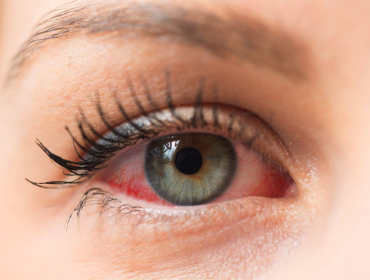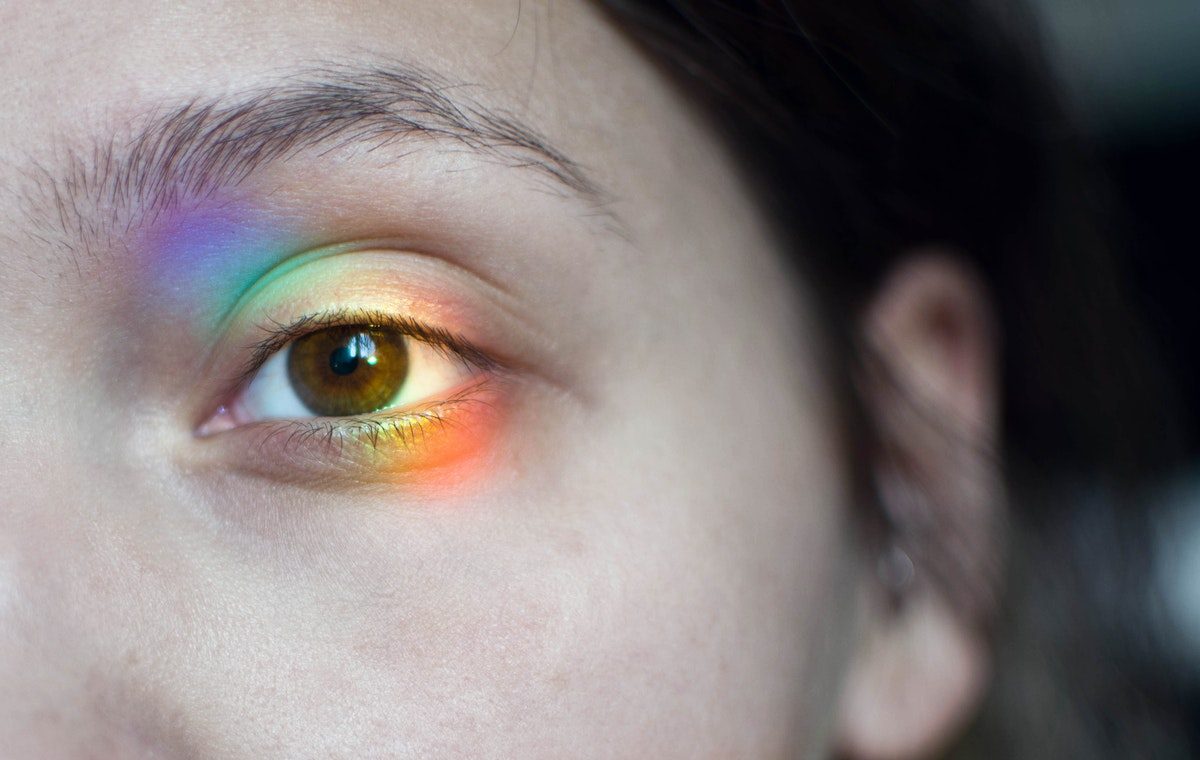Is Pink Eye Contagious Like an STD?
Imagine locking eyes across a crowded room, that initial spark igniting interest, only to later find them red and irritated. Conjunctivitis, commonly known as pink eye, often raises concerns about its potential transmission through intimate contact.
It is not an STD.
However, understanding the nuances of its transmission is key. Pink eye may share transmission routes with certain sexually transmitted infections (STIs), enlightening the rationale behind this common misconception.
Unraveling Pink Eye Basics
Conjunctivitis, colloquially referred to as “pink eye,” represents an inflammation of the conjunctiva, the transparent membrane that lines the eyelid and covers the white part of the eyeball. This condition manifests through redness, swelling, itching, and may produce a discharge that can crust over, typically while sleeping. It’s critical to discern that pink eye itself is not a sexually transmitted disease (STD), but it can be caused by pathogens, including bacteria and viruses, some of which are also responsible for certain STDs. Notably, pink eye can arise from various etiologies, and its communicability is dependent upon the underlying infectious agent involved.
Secure and Confidential
STD testing services
The fastest results possbile - available in 1 to 2 days
Defining Pink Eye
Conjunctivitis, commonly known as “pink eye,” is an ocular condition characterized by inflammation of the conjunctiva, the transparent mucous membrane covering the white portion of the eye and the inner eyelid surfaces.
The hallmark presentation of pink eye includes redness, irritation, and potential discharge. Although the symptoms may be uncomfortable, the condition itself is not inherently a sexually transmitted disease.
Pink eye can be precipitated by pathogens implicated in STDs.
While not an STD, the agents causing pink eye, such as bacteria, viruses, or allergens, can still be spread through close personal contact, including sexual interaction. This may contribute to the misconception that pink eye is sexually transmitted.

Causes and Transmission
Pink eye, or conjunctivitis, stems from several infectious agents including bacteria, viruses, and allergens. These pathogens have distinct transmission vectors.
Bacterial and viral conjunctivitis are the forms most likely to be contagious. They can spread through direct contact with infected secretions.
The transmission of these infectious agents frequently occurs via hand-to-eye contact after touching a contaminated surface. Sharing personal items like towels or makeup can also be vectors of transmission.
Infectious conjunctivitis warrants caution as it may be transmitted in similar fashion to certain sexually transmitted diseases (STDs), for instance, during close bodily contact. However, the conjunctiva’s infection itself is not classified as an STD. Nonetheless, bacteria responsible for STDs, such as Chlamydia trachomatis, may also cause conjunctivitis, thereby intertwining their transmission pathways.
STDs and Eye Infections
Sexually transmitted diseases (STDs) can lead to eye infections through autoinoculation or direct contamination. This occurs when a person transfers a pathogen from one part of their body to their eye, potentially introducing STD-associated bacteria such as Chlamydia trachomatis or Neisseria gonorrhoeae. These bacteria can colonize the conjunctiva, leading to conjunctivitis that may resemble common “pink eye” but is rooted in an STD.
In the realm of ocular health, an STD-induced eye infection is a critical concern. Take, for example, ocular herpes, caused by the herpes simplex virus, which can have severe and recurrent implications for one’s vision if not managed appropriately. Similarly, syphilitic uveitis or chlamydial trachoma can lead to significant ocular distress. Recognition and treatment of these conditions are paramount as they require a more specialized approach than standard pink eye, underscoring the importance of comprehensive STD screening in sexually active individuals.
Chlamydia and Gonorrhea Links
Chlamydial and gonococcal infections are notable for their capacity to induce conjunctivitis.
Consider that chlamydia and gonorrhea, predominantly known as sexually transmitted infections, can also manifest ocularly. When an individual with an active genital chlamydial or gonococcal infection touches their eye after contact with the infected area, they risk transferring the bacteria to their conjunctiva. This cross-contamination can spark an ocular manifestation traditionally recognized as conjunctivitis but is in actuality a sexually transmitted bacterium-driven inflammation.
Despite similarities in symptoms, chlamydial and gonococcal conjunctivitis necessitate distinct therapeutic interventions compared to viral or allergic conjunctivitis. Accurate diagnosis and tailored antibiotic therapy are essential, as mismanagement can lead to serious complications, including corneal scarring and, potentially, vision loss. Conferring with an ophthalmologist is central to delineate these conditions accurately.
Moreover, the transmission dynamics of chlamydia and gonorrhea as ocular pathogens underscore the interconnectedness of sexual and ocular health. To prevent crossover infections, observing stringent hygiene practices post-sexual activity and seeking regular comprehensive STD screenings serves as a critical line of defense. This is especially relevant for individuals with multiple sexual partners or those at high risk for STDs.
Sexual Activity Risks
Engaging in unprotected sexual activities can inadvertently expose eyes to pathogens, particularly during oral-genital or hand-to-genital contact, which can result in bacterial or viral conjunctivitis. Outcomes of such encounters are not confined to the genitourinary tract but may extend to the ocular region, indicating a broader scope of potential infection.
Direct contact with infected genital secretions poses a significant risk. Safe sexual practices are imperative to prevent ocular transmissions.
Furthermore, autoinoculation can occur when individuals touch their genitals and subsequently their eyes, transferring pathogens (chlamydia or gonorrhea) that may cause conjunctivitis.
It’s imperative to recognize that ocular infections may arise from personal sexual practices. Implementing safer sexual strategies, including the consistent use of condoms and thorough hand washing, can mitigate the risk of crossing these pathogens into the ocular region.
When engaging in sexual encounters with new or multiple partners, especially where the history of STDs is uncertain or increased promiscuity is present, the probability of such transmissions heightens. Regular STD testing is recommended to reduce the likelihood of both genital and secondary ocular infections.
Ultimately, while the eye itself is not a common site for sexually transmitted pathogens, its exposure to them is not improbable. Ensuring protective measures are in place during sexual encounters can safeguard against such instances.
Comparing Contagion Methods
Conjunctivitis, colloquially known as pink eye, can be transmitted through various mechanisms, direct contact, airborne droplets, or surface contamination. Unlike sexually transmitted diseases (STDs), which require specific conditions for transmission, conjunctivitis pathogens are highly adept at spreading through casual, non-sexual contacts such as handshakes or shared towels.
The pathogens responsible for sexually-transmitted conjunctivitis, particularly those associated with chlamydia and gonorrhea, demand closer contact akin to sexual encounters for transmission. Thus, while conjunctivitis can coincide with STDs, its contagion pathways are more expansive and less restrictive.
Direct vs. Indirect Contact
Transmission vectors for conjunctivitis include both direct physical contact and indirect routes.
- Direct Contact: Physical touch, such as touching an infected individual’s eye secretions followed by touching one’s own eyes.
- Indirect Contact: Interaction with contaminated surfaces or objects, like using a towel used by someone with conjunctivitis.
Direct routes are analogous to sexually transmitted infections, though conjunctivitis does not specifically require sexual contact. Indirect transmission highlights the disparate contagion mechanisms, underscoring conjunctivitis’s higher communicability.
Preventing and Treating Pink Eye
The cornerstone of preventing pink eye, or conjunctivitis, resides in maintaining rigorous hygiene practices. Frequent hand washing, avoiding contact with the eyes, and disinfecting surfaces that come into frequent touch with hands can dramatically reduce the risk of transmission. For individuals already experiencing symptoms, it is imperative to avoid sharing personal items such as towels, pillows, or eye cosmetics, and to abstain from touching or rubbing the affected eye to prevent the spread to others.
When confronting a case of pink eye, medical consultation is advised to determine its etiology and appropriate treatment. Viral conjunctivitis generally resolves on its own, while bacterial infections may necessitate antibiotic therapy. Adhering to the complete course of prescribed medications and the cessation of any eye makeup use are essential steps towards recuperation and inhibiting further spread of the infection.
Hygiene and Prevention Strategies
Hand hygiene is crucial in prevention.
Infectious conjunctivitis, colloquially known as pink eye, can often be averted through meticulous personal hygiene and proactive prevention measures. Frequent handwashing with soap for at least 20 seconds, especially after touching the face or potentially contaminated surfaces, serves as a primary defense. Additionally, abstaining from sharing personal items like face towels or makeup is crucial to avoid cross-contamination.
Always avoid touching your eyes.
A disciplined approach to hand and face hygiene – frequently cleansing your hands and face, refraining from eye contact with unwashed hands, and using clean towels and washcloths – can markedly reduce the risk of infection. Such habits are not only mandatory for those infected but also for preventive measures within communal living spaces or crowded environments.
Individuals utilizing contact lenses must adhere to stringent hygiene protocols: always washing hands before handling lenses, using proper lens solutions, and replacing them as recommended. Lax practices in this regard can exacerbate the risk of contracting not only conjunctivitis but also more severe ocular infections.
Moreover, the sanitation of frequently touched objects and surfaces in shared environments, such as doorknobs, countertops, and electronic devices, is critical in curbing the spread of pathogens that could lead to conjunctivitis. In settings where outbreaks are common, such as schools or daycare centers, regular and thorough cleaning routines are indispensable.
Medical Interventions and Self-Care
Effective management of pink eye may necessitate medical intervention, particularly when symptoms persist or escalate.
- Practice diligent personal hygiene, especially handwashing.
- Avoid touching or rubbing the affected eye(s).
- Do not share personal items such as towels, bedding, or makeup.
- Refrain from using contact lenses until the infection has resolved.
- Apply warm compresses to alleviate discomfort and reduce inflammation.
- Utilize antibiotic or antiviral medications if prescribed, following the exact dosage instructions.
When experiencing symptoms of pink eye, consult a healthcare professional without delay.
Maintaining scrupulous hygiene and adhering to prescribed treatments usually leads to prompt improvement.
Medically Reviewed by Colleen Ryan, MD on April 18, 2024
Secure and Confidential
STD testing services
The fastest results possbile - available in 1 to 2 days

Tagged
Categorized As
Author: Nick Corlis
Nick Corlis is a writer, marketer, and designer. He graduated from Texas State University in San Marcos, Texas, with a degree in Digital Communications. Nick is proud to be able to help eliminate the stigma of STD testing through his writing and is always trying to advocate the importance of your sexual health. Before STDcheck, his favorite way to develop his writing skills was by accepting various writing jobs in college and maintaining multiple blogs. Nick wears many hats here at STDcheck, but specifically enjoys writing accurate, well-researched content that is not only informative and relatable but sometimes also contains memes. When not writing, Nick likes to race cars and go-karts, eat Japanese food, and play games on his computer.




